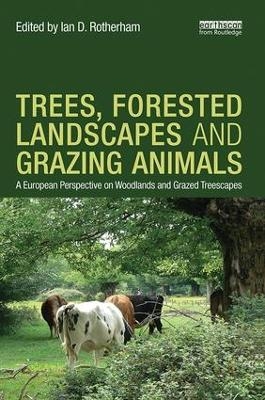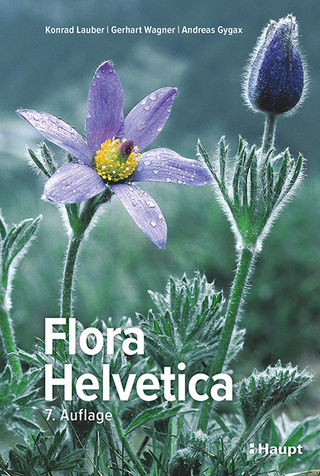
Trees, Forested Landscapes and Grazing Animals
Routledge (Verlag)
978-1-138-30448-2 (ISBN)
In this comprehensive book, the critical components of the European landscape – forest, parkland, and other grazed landscapes with trees are addressed. The book considers the history of grazed treed landscapes, of large grazing herbivores in Europe, and the implications of the past in shaping our environment today and in the future. Debates on the types of anciently grazed landscapes in Europe, and what they tell us about past and present ecology, have been especially topical and controversial recently. This treatment brings the current discussions and the latest research to a much wider audience.
The book breaks new ground in broadening the scope of wood-pasture and woodland research to address sites and ecologies that have previously been overlooked but which hold potential keys to understanding landscape dynamics. Eminent contributors, including Oliver Rackham and Frans Vera, present a text which addresses the importance of history in understanding the past landscape, and the relevance of historical ecology and landscape studies in providing a future vision.
Ian D. Rotherham is Professor of Environmental Geography, Reader in Tourism & Environmental Change, and International Research Co-ordinator Professor in the Faculty of Development and Society, Sheffield Hallam University, UK.
Part 1: Grazed Treed Landscapes 1. Overview and Introduction 2. Woodland and Wood-Pasture Part 2: The Lessons of History 3. Woods, Trees and Animals: a Perspective from South Yorkshire, England 4. Re-wilding the Landscape: Some Observations on Landscape History 5. Re-thinking Pannage and Historical Interactions 6. The Post-glacial History of Grazing Animals in Europe Part 3: Landscape Dynamics 7. Re-interpreting Wooded Landscapes, Shadow Woods and the Impacts of Grazing 8. The Dynamics of Pre-Neolithic European Landscapes and their Relevance to Modern Conservation 9. Can’t See the Trees for the Forest 10. Ancient Trees and Grazing Landscapes 11. Grazed Wood Pasture versus Browsed High Forests – Impact of Ungulates on Forest Landscapes from the Perspective of the Białowieża Primeval Forest 12. The Influence of Grazing Animals on Tree Regeneration and Woodland Dynamics in the New Forest, England 13. Forest and Land Management Options to Prevent Unwanted Forest Fires Part 4: Case Studies 14. Grazing Refuge Habitats and their Importance for Woody Plants in the West of Scotland 15. Legacies of Livestock Grazing in the Forest Structure of Valonia Oak Landscapes in the Eastern Mediterranean 16. Palaeoecological Records of Woodland History During Recent Centuries of Grazing and Management Examples from Glen Affric, Scotland and Ribblesdale, North Yorkshire 17. The Chillingham Park Cattle, Northumberland Part 5: Conservation, Management and Wildscapes 18. The Impacts of the Reintroduction of Wild Boar in the Forest of Dean, Great Britain 19. Wild Cattle and the ‘Wilder Valley’ Experiences – the Introduction of Extensive Grazing with Galloway Cattle in the Ennerdale Valley, England 20. Treescapes: Trees, Animals, Landscape, People and ‘Treetime’ 21. Creation of Open Woodlands through Pasture: Genesis, Relevance as Biotopes, Value in the Landscape and in Nature Conservation in Southwest-Germany 22. Woodland Grazing with Cattle – Results from 25 years of Grazing in Acidophilus Pedunculate Oak (Quercus robur) Woodland 23. Ancient Trees, Grazing Landscapes and the Conservation of Dead Wood and Wood Decay Invertebrates 24. The Future Potential of Wood Pastures 25. A Strategic View of the Issues for Wood Pasture and Parkland Conservation in England Part 6: Summary & Conclusions 26. Re-wilding Trees for Ancients of the Future 27. Summary & Conclusions
| Erscheinungsdatum | 18.08.2017 |
|---|---|
| Zusatzinfo | 32 Tables, black and white; 60 Illustrations, black and white |
| Verlagsort | London |
| Sprache | englisch |
| Maße | 156 x 234 mm |
| Gewicht | 453 g |
| Themenwelt | Geisteswissenschaften ► Geschichte |
| Naturwissenschaften ► Biologie ► Botanik | |
| Technik ► Umwelttechnik / Biotechnologie | |
| Weitere Fachgebiete ► Land- / Forstwirtschaft / Fischerei | |
| ISBN-10 | 1-138-30448-4 / 1138304484 |
| ISBN-13 | 978-1-138-30448-2 / 9781138304482 |
| Zustand | Neuware |
| Haben Sie eine Frage zum Produkt? |
aus dem Bereich


